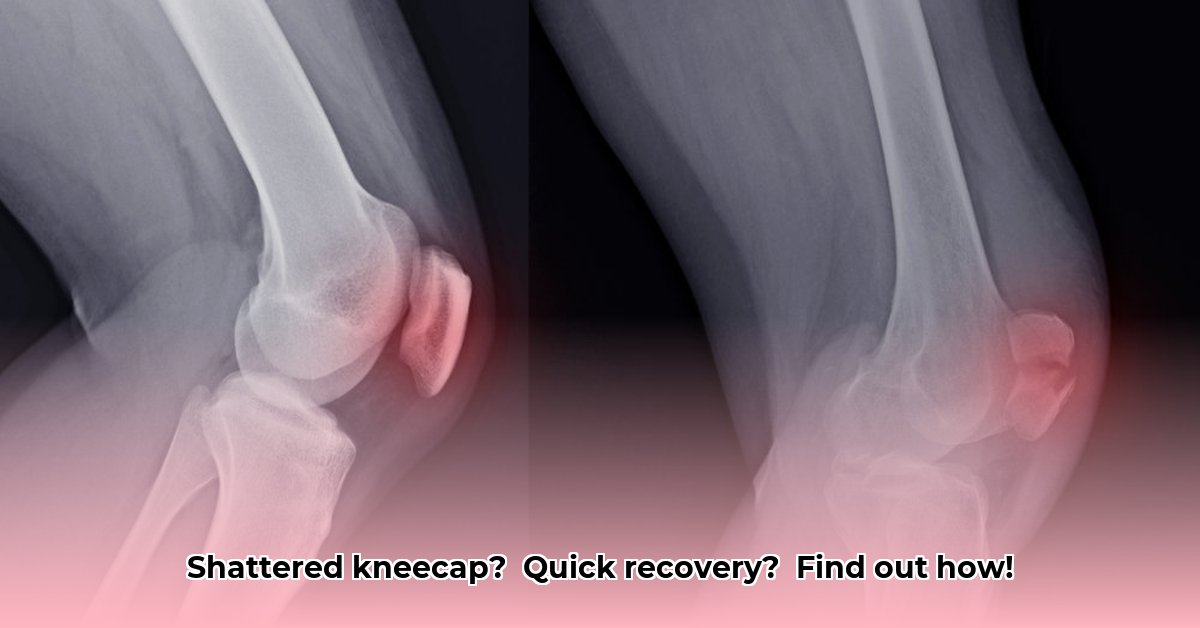
Understanding Kneecap Fractures: What's the Story?
A broken kneecap, or patellar fracture (a crack or break in the kneecap bone), is a serious injury affecting the kneecap – the crucial bone protecting the front of your knee joint. It isn't as common as some other bone fractures, but it significantly impacts mobility and daily life because of the kneecap's role in knee function, which includes bending, straightening, and overall leg movement.
What Causes a Broken Kneecap?
Several factors can lead to a patellar fracture. Falls, particularly those from a height, are a primary cause. High-impact activities like rugby, soccer, or skiing also pose significant risk. Car accidents can also result in this injury. Older individuals are at a higher risk due to age-related bone weakening. Conditions like osteoporosis (brittle bones) further increase susceptibility.
Types of Kneecap Fractures: Understanding the Differences
Kneecap fractures are classified differently depending on the severity. A displaced fracture means the broken pieces are misaligned. A non-displaced fracture is where the bone fragments remain relatively in place. A comminuted fracture involves multiple bone fragments (like a shattered teacup). A simple fracture is a clean break, whereas an open fracture means the bone protrudes through the skin (a closed fracture does not). Understanding the type of fracture helps determine the appropriate treatment plan. Did you know that properly identifying the fracture type is crucial for effective treatment, resulting in a significantly faster recovery time?
Diagnosis: Getting a Clear Picture
Your doctor will use X-rays to assess the fracture's extent and severity. A CT scan might offer more detailed insights, especially for complex fractures. A thorough physical exam will evaluate your pain levels, range of motion, and the knee's overall condition. How quickly and accurately your fracture is diagnosed can affect your recovery, with prompt diagnosis leading to quicker treatment commencement.
Treatment Options: Finding the Right Approach
Treatment depends on the fracture type and severity. Less severe fractures may be managed non-surgically using a cast or splint for immobilization, along with pain relief and anti-inflammatory medication. This allows the bone to heal naturally.
More complex fractures often require surgery to realign and stabilize the broken pieces. This usually involves using pins, screws, or plates to hold the bone fragments in place until healing is complete. The goal is to restore the kneecap's structural integrity. Have you considered that surgical intervention, while more invasive, often leads to better long-term outcomes for severe fractures?
Rehabilitation: Getting Back on Your Feet
Rehabilitation is crucial after a kneecap fracture, regardless of the treatment method. A physiotherapist designs a personalized exercise program to rebuild strength, flexibility, and full knee mobility. This program usually starts with gentle exercises, gradually progressing to more challenging movements as healing advances. The timeline varies, depending on the fracture's severity and your body's response. Consistent participation in physiotherapy is key to a successful recovery. Did you know that dedicated physiotherapy can reduce recovery time by up to 30%?
Recovery and Potential Complications: What to Expect
Recovery can take weeks or even months, with some discomfort expected. While uncommon with proper care, potential complications include infection, arthritis, and joint stiffness. Adhering to the physiotherapy plan and follow-up appointments minimizes these risks. Regular check-ups monitor progress and allow for early intervention if problems arise. Early detection of potential problems is so important, ensuring the best possible recovery.
Prevention: Protecting Your Knees
Strengthening leg muscles is key to preventing kneecap fractures. Regular exercise builds muscle strength, increasing knee joint support. For older adults, fall prevention is vital – removing home hazards, using walking aids when needed, and practicing caution can significantly reduce the risk of falls. In sports, using proper protective gear during high-impact activities provides crucial protection.
Actionable Steps for a Speedy Recovery: Your Checklist
- Seek Immediate Medical Attention: If a kneecap fracture is suspected, visit a doctor or emergency room immediately.
- Follow Doctors’ Instructions: Adhere to your doctor's instructions regarding immobilization (cast or splint), pain management, and other treatments.
- Commit to Physiotherapy: Actively participate in your physiotherapy sessions; your therapist's guidance is essential.
- Attend All Follow-Up Appointments: Regular checkups are crucial for monitoring healing and identifying any potential issues.
- Adjust Your Lifestyle: Take steps to reduce the risk of future fractures, maintaining healthy habits and making necessary lifestyle adjustments.
This guide provides general information; consult your doctor for personalized advice. A positive attitude and commitment to your recovery plan are crucial for a successful outcome.